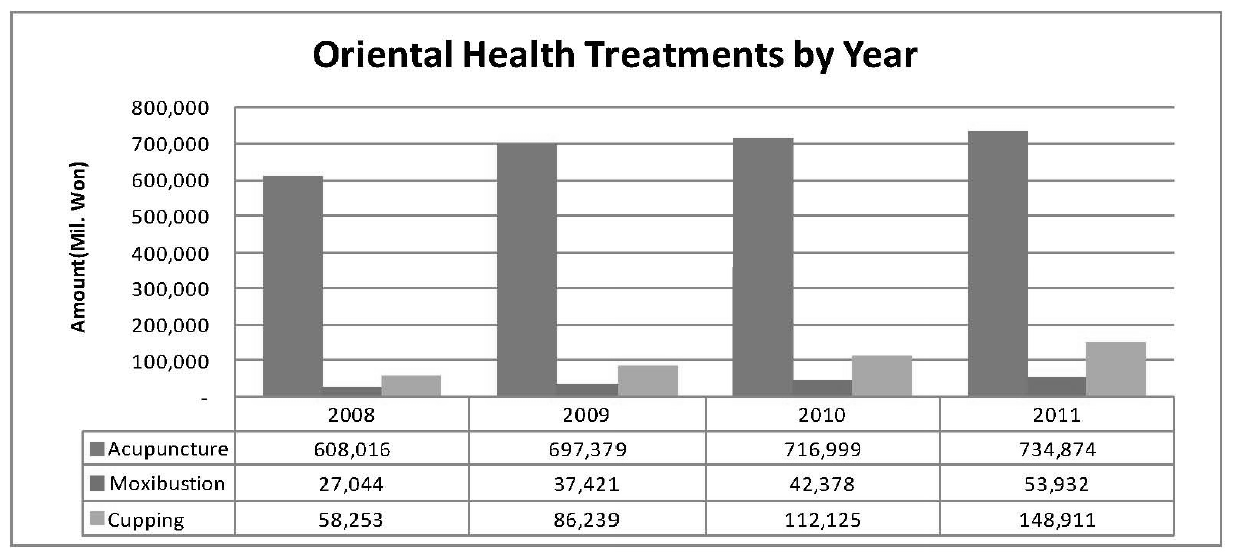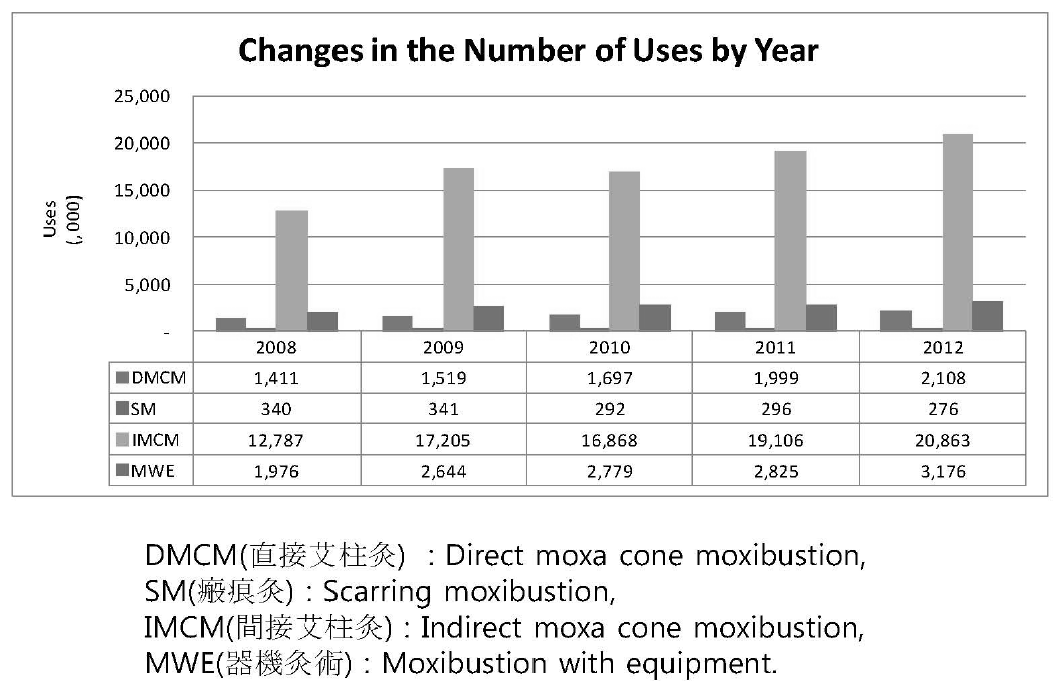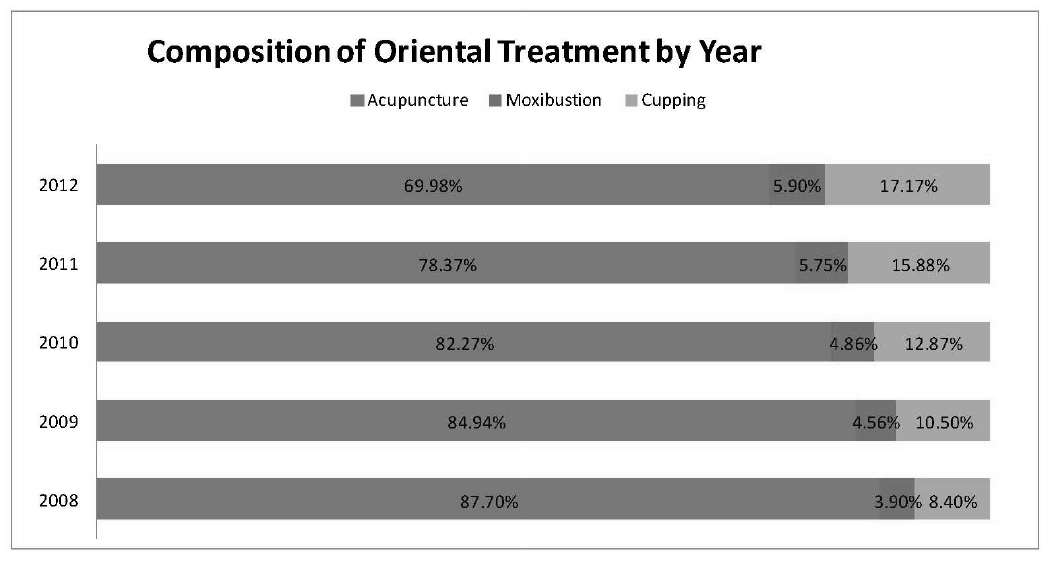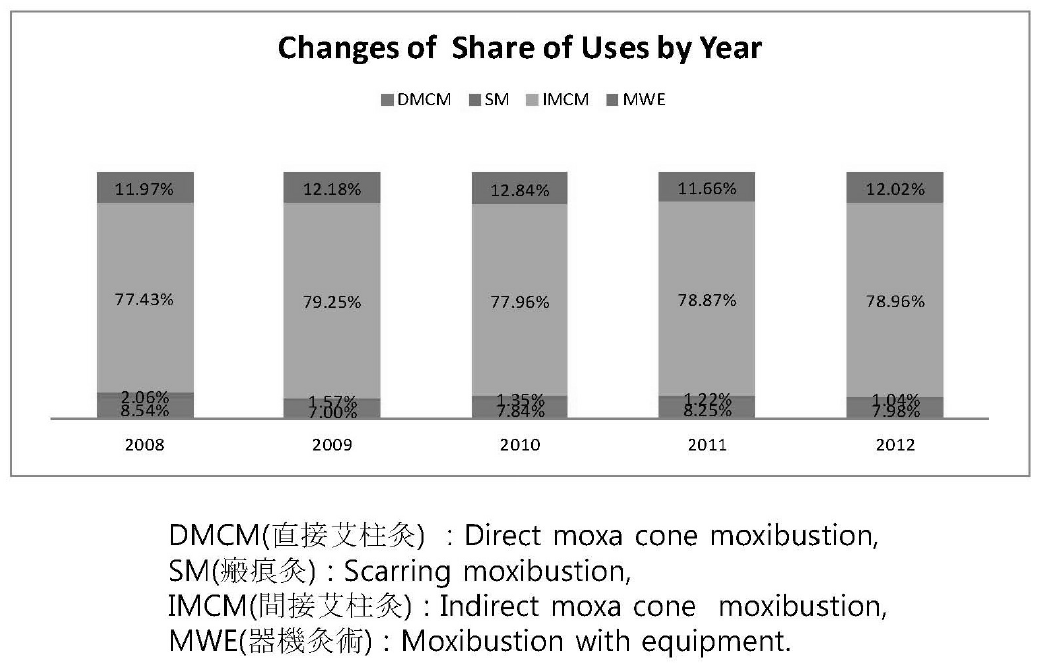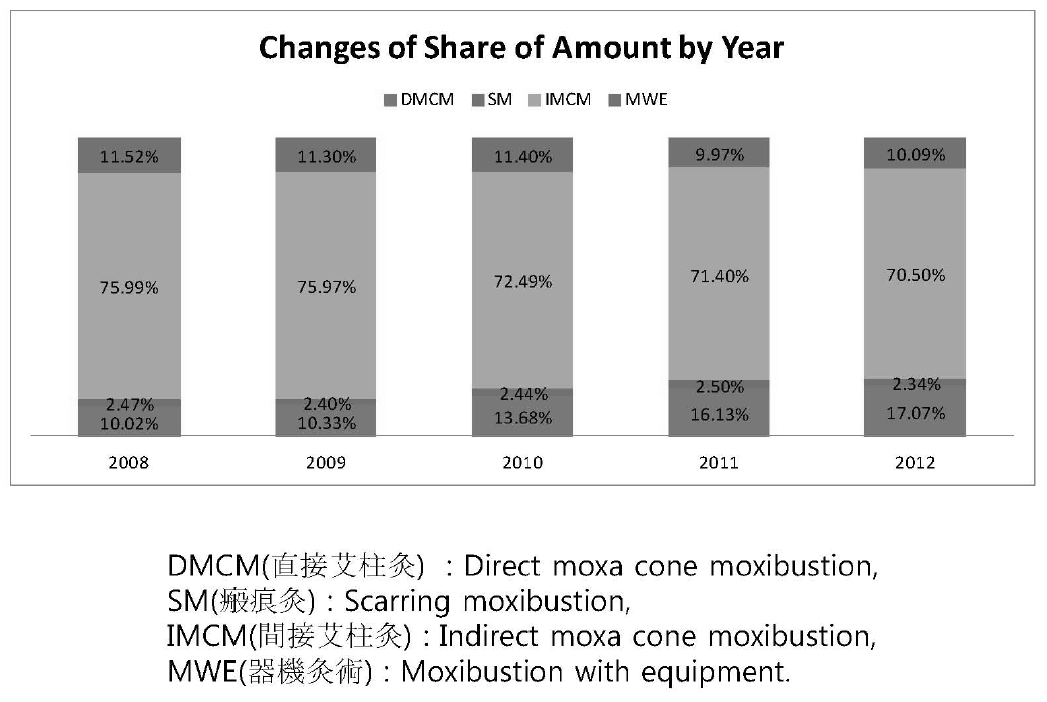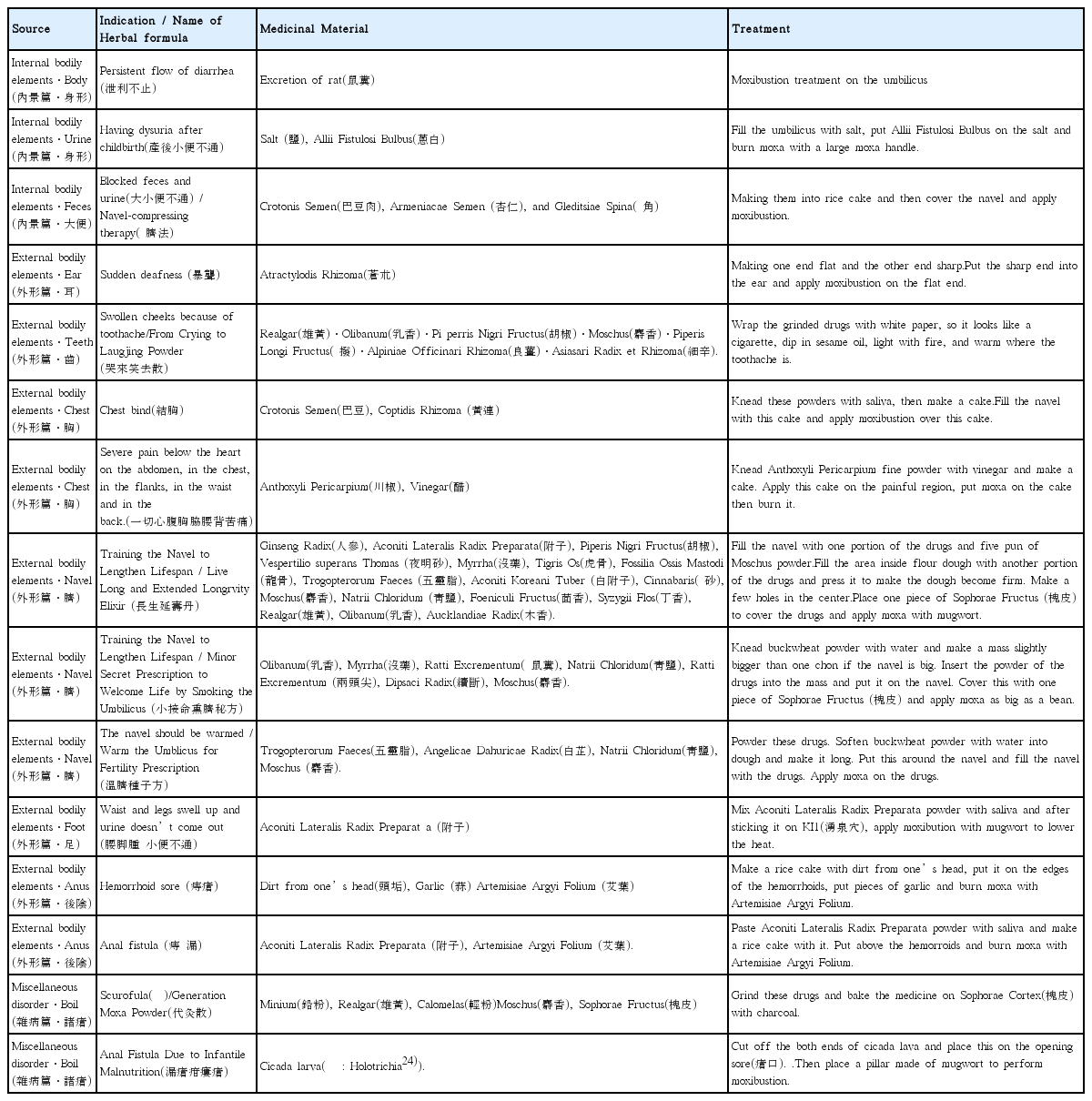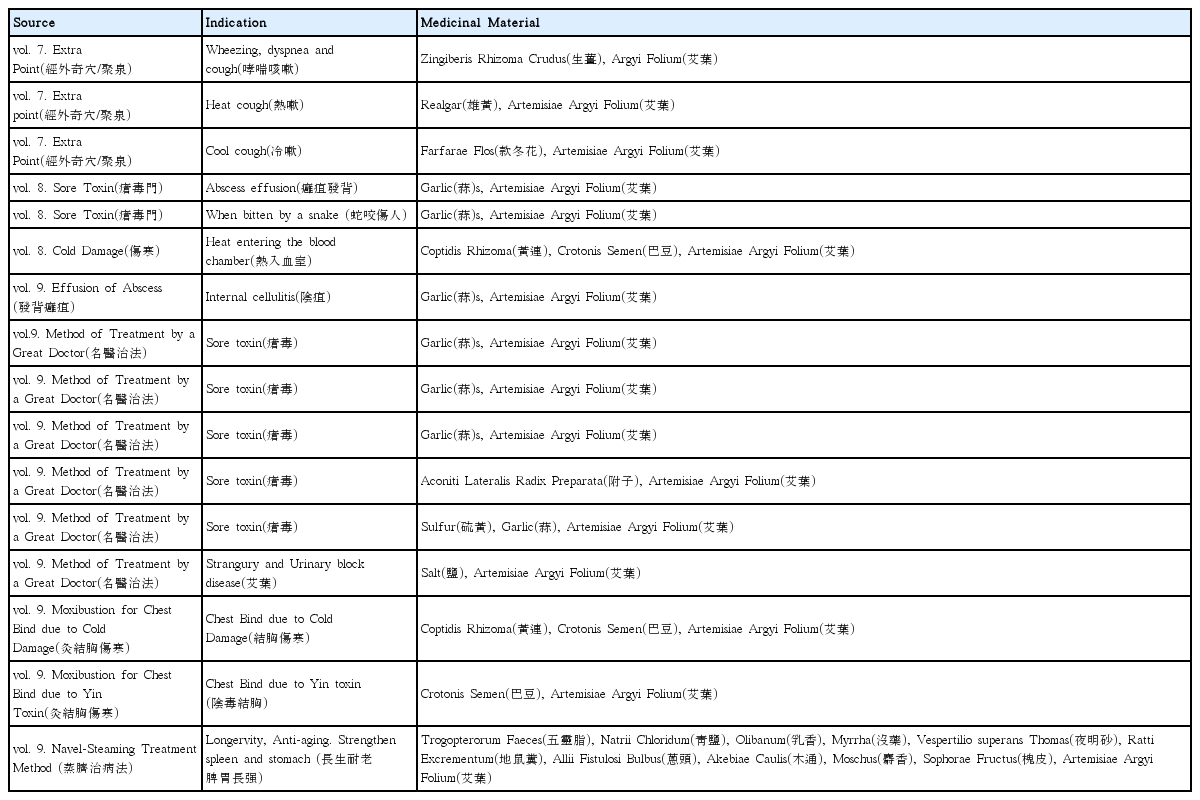References
1. Wang B annotation. Huangdi’s Internal Classic-Plain Question Seoul: Yeogang; 1988. p. 306. p. 49. p. 87.
2. Wang B annotation. Huangdi’s Internal Classic-Miraculous Pivot Seoul: Yeogang; 1988. 386p. 412.
3. Chang HH, Shin MS, Kang KW, Kang BK, Park SH, Choi SM. An in-depth interview for use of moxibustion therapy in Korea. Journal of Meridian & Acupoint 2008;25(1):85–97.
4. Korean Acupuncture & Moxibustion Society Textbook Compilation Committee. The Acupuncture and Moxibustion Medicine Paju: Jipmoondang; 2012. 330p. 327.
5. The Society of Korean Medicine. Korean Classification of Procedure in Korean Oriental Medicine Seoul: The Society of Korean Medicine; 2008. p. 1–75.
7. Heo J. Ahn SW, Chio H, Bae SJ, Cho HJ, Lee YH, Chung JH, et al. Donguibogam_Principles and Practice of Estern Medicine(part · V) Seoul: Ministry for Health, Welfare and Family Affairs; 2010. p. 149–51.
8. Heo J. Kim NI, Jeong CH, Cha WS. Donguibogam_Principles and Practice of Estern Medicine(part · I) Seoul: Ministry of Health & Welfare; 2011. 44p. 551. p. 684.
9. Heo J. Kim NI, Jeong CH, Cha WS. Donguibogam_Principles and Practice of Estern Medicine(part · II) Seoul: Ministry of Health & Welfare; 2011. 208p. 276p. 404p. 442–3.
p. 445p. 592–3.
p. 730–1.
10. Heo J. Kim NI, Jeong CH, Cha WS. Donguibogam_Principles and Practice of Estern Medicine(part · III-3) Seoul: Ministry of Health & Welfare; 2012. p. 412–3.
p. 429–30.
11. Hiroshi KST, Eiichi HSB, Senjuro MC. Goju-ni Byo-ho Tokyo: Toho Shoten; 2007. 58p. 84. p. 109.
12. Yang JZ, Zhen JDC. Seoul: Daesungmoonhwasabook; 1984. 381p. 422. p. 426. p. 452. p. 459. p. 460. p. 469. p. 490.
13. Xue J, Wai KFH. Beijing: People’s Medical Piblishing House; 2007. 98p. 148.
14. Sohn IC, Kim YL, Ahn SH. Study on the Pharmmoxibustion. The Journal of Traditional Korean Medicine 2010;18(2):59–75.
15. Yi SX, Tian HM. A Research Process on Herbs-partitioned Moxibustion. Contemporary Medicine 2008;3:72–74.
:169.
16. Woo HS, Lee YH, Kim CH. The Review and Study Trend of Moxibustion. The Journal of Korean Acupuncture & Moxibustion Society 2002;19(4):1–15.
17. Jang MK, Kim EJ, Jung CY, Yoon EH, Hwang JH, Kim KS, et al. A Study of Comparing Thermal Stimulation between Commercial Indirect Moxibustion and Traditional Indirect Moxibustion. The Journal of Korean Acupuncture & Moxibustion Society 2010;27(3):35–45.
18. Lim JW, Lee SH. A Literature Review on Research Methodology Assessing Properties of Moxibustion. The Journal of Korean Acupuncture & Moxibustion Medicine Society 2012;29(6):1–10.
19. Wang KH, Kim EJ, Cho HS, Kim KS, Lee SD, Kim KH. A Comparative Study on Buffer Characteristic of Indirect Moxibustion. The Journal of Korean Acupuncture & Moxibustion Medicine Society 2012;29(5):75–85.
20. Lee MS, Kim KH, Kim JK, Lee BR, Yang GY. A Study on the Legal Aspect of Concept for the Acupuncture and Moxibustion in Traditional Korean Medical Practice:based on Judicial Precedent. The Journal of Korean Acupuncture & Moxibustion Medicine Society 2011;28(5):19–27.
21. Chen S, Du D, Ma YX, Xin Q, Gao SZ, Wang XY. Clinical Study on Herbal Cone-partitioned Moxibustion for Irritable Bowel Syndrome due to Spleen-qi Deficiency. J. Acupunct. Tuina. Sci 2011;9(5):265–268.
22. Zhang XX, Tang XD, Li WH. Twenty-eight cases of simple obesity of spleen and kidney yang deficiency pattern/syndrome in females treated with electroacupuncture and isolated-medicinal moxibustion. World Journal of Acupuncture-Moxibustion 2012;22(3):65–8.
23. Lee BK. Study on Conceptual Factors and Types of Korean Medical Practice. Law and Medicine 2012;13(3):263–84.
24. Herbology Editorial Committee of Korean Medicine School. Herbology Seoul: Younglimsa; 2012. p. 734.
